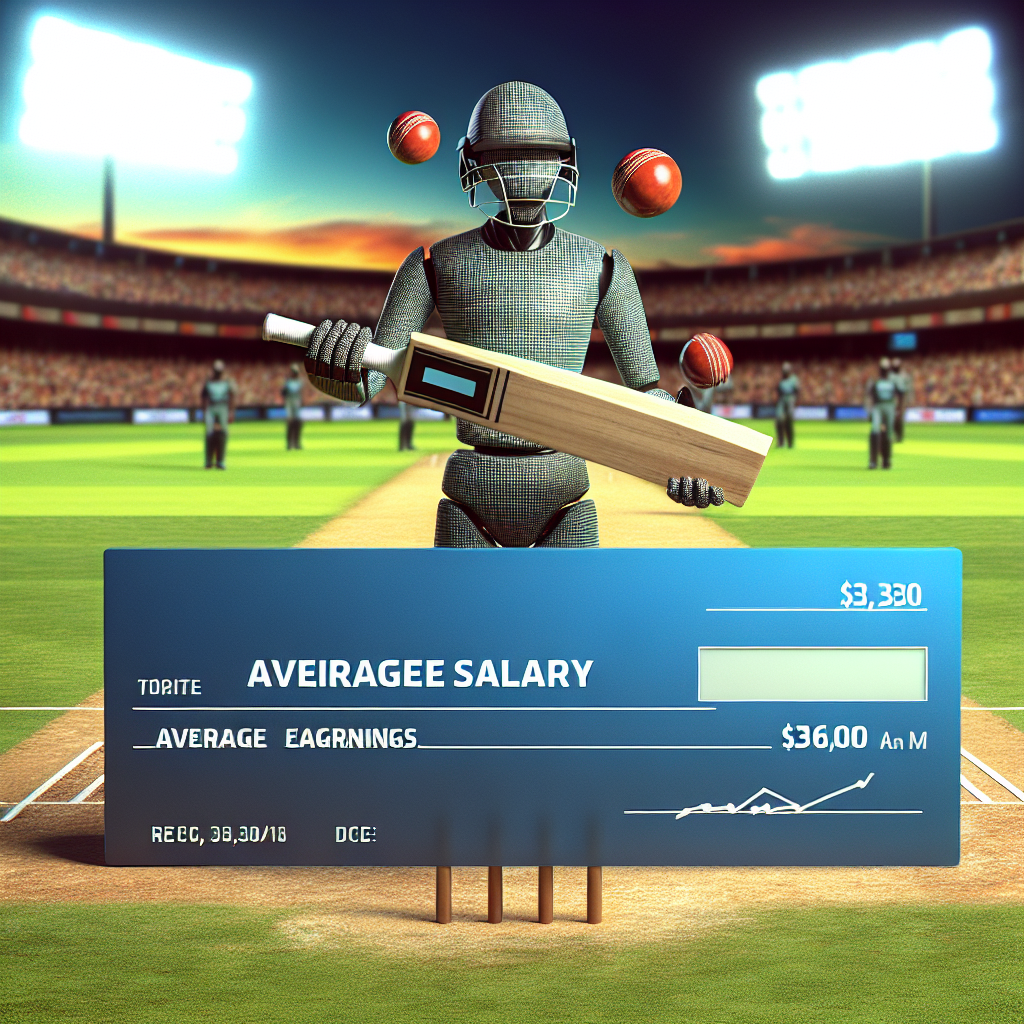Understanding the Salary of a Ranji Player: A Comprehensive Guide
Cricket is not just a sport in India; it is a passion that unites millions. While international cricket stars often bask in the limelight, domestic players, particularly those in the Ranji Trophy, form the backbone of Indian cricket. The Ranji Trophy is the premier first-class cricket championship in India, and it has been a stepping stone for many cricketers who have gone on to represent the country at the international level. However, the financial aspects of being a Ranji player are often shrouded in mystery. This article aims to shed light on the salary structure of Ranji players, providing a detailed analysis of their earnings, benefits, and the factors influencing their pay.
The Structure of Ranji Player Salaries
The salary of a Ranji player is determined by several factors, including the player’s experience, performance, and the financial health of the state cricket association they represent. The Board of Control for Cricket in India (BCCI) plays a crucial role in setting the base pay for these players, but there are variations based on state associations.
Base Salary and Match Fees
As of the latest updates, the BCCI has revised the pay structure for domestic cricketers, including Ranji players. The base salary is typically divided into match fees and retainers. Here’s a breakdown:
- Match Fees: Ranji players earn a match fee for each game they play. As of recent reports, a player can earn approximately INR 35,000 to INR 60,000 per day of a Ranji match. Given that a Ranji match lasts four days, a player can earn between INR 140,000 to INR 240,000 per match.
- Retainer Fees: In addition to match fees, players receive a retainer fee, which is a fixed amount paid annually. This can range from INR 10 lakh to INR 20 lakh, depending on the player’s experience and the state association’s budget.
Performance Bonuses
Performance bonuses are an integral part of a Ranji player’s earnings. Players who perform exceptionally well, such as scoring centuries or taking five-wicket hauls, are often rewarded with additional bonuses. These bonuses can significantly boost a player’s income over a season.
Factors Influencing Ranji Player Salaries
Several factors influence the salary of a Ranji player. Understanding these can provide insights into the financial dynamics of domestic cricket in India.
Experience and Seniority
Experience plays a significant role in determining a player’s salary. Senior players with years of experience and consistent performance records are likely to earn more than newcomers. This is reflected in both their match fees and retainer contracts.
State Association’s Financial Health
The financial health of a state cricket association can greatly impact a player’s earnings. Wealthier associations, such as those from Mumbai or Karnataka, often have more resources to pay their players better compared to less affluent associations.
Performance and Consistency
Consistent performance is key to securing higher pay. Players who consistently perform well are not only rewarded with bonuses but also have better chances of being selected for higher-paying leagues like the Indian Premier League (IPL), which can significantly enhance their earnings.
Case Studies: Earnings of Notable Ranji Players
To better understand the financial landscape of Ranji players, let’s look at some case studies of notable players who have made a mark in domestic cricket.
Case Study 1: Wasim Jaffer
Wasim Jaffer, one of the most successful Ranji players, has had a long and illustrious career. His consistent performance over the years not only earned him a place in the Indian national team but also ensured a steady income through match fees and bonuses. Jaffer’s earnings were further supplemented by coaching roles and commentary stints post-retirement.
Case Study 2: Shreyas Iyer
Shreyas Iyer, who started his career with the Mumbai Ranji team, quickly rose through the ranks due to his exceptional performance. His success in the Ranji Trophy paved the way for his selection in the IPL, where he earned significantly higher pay. This highlights how domestic performance can lead to lucrative opportunities.
The Role of the BCCI in Enhancing Player Salaries
The BCCI has been instrumental in improving the financial conditions of domestic players. Recent reforms have aimed at increasing the pay structure to ensure that players can focus on their game without financial stress.
Recent Reforms
In recent years, the BCCI has taken steps to increase the match fees and retainer amounts for domestic players. These reforms are part of a broader strategy to make domestic cricket more attractive and financially rewarding.
Support Systems
Beyond salaries, the BCCI also provides support systems such as medical insurance, pension schemes, and career counseling to help players transition smoothly post-retirement.
Challenges Faced by Ranji Players
Despite the improvements, Ranji players face several challenges that can impact their financial stability and career growth.
Inconsistent Income
The income of a Ranji player can be inconsistent, especially for those who are not regulars in the playing XI. Injuries or loss of form can lead to reduced match fees and bonuses.
Limited Sponsorship Opportunities
Unlike international players, Ranji players have limited access to sponsorship deals, which can be a significant source of income. This is primarily due to the lower visibility of domestic cricket.
Conclusion: The Financial Landscape of Ranji Players
The salary of a Ranji player is influenced by various factors, including experience, performance, and the financial health of their state association. While recent reforms by the BCCI have improved the pay structure, challenges such as inconsistent income and limited sponsorship opportunities remain. However, for many players, the Ranji Trophy serves as a crucial platform to showcase their talent and potentially secure more lucrative opportunities in leagues like the IPL or even the national team.
In summary, while the financial rewards of being a Ranji player may not match those of international stars, the role of domestic cricket in shaping the future of Indian cricket is undeniable. As the BCCI continues to invest in domestic cricket, the hope is that the financial conditions for Ranji players will continue to improve, ensuring that they can pursue their passion without financial constraints.



